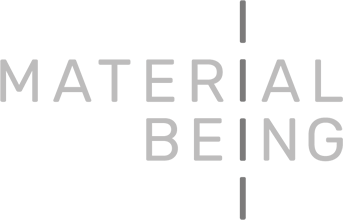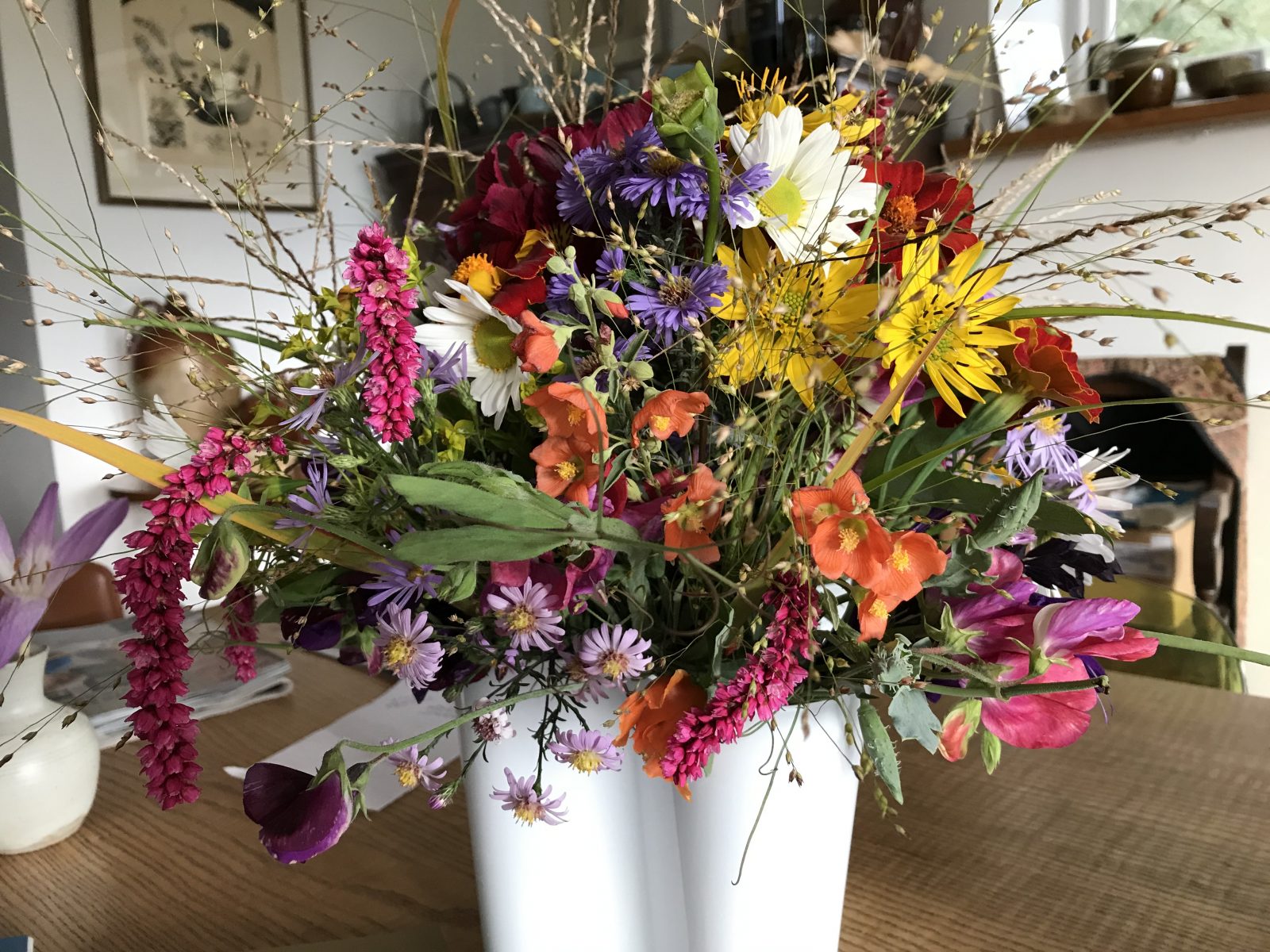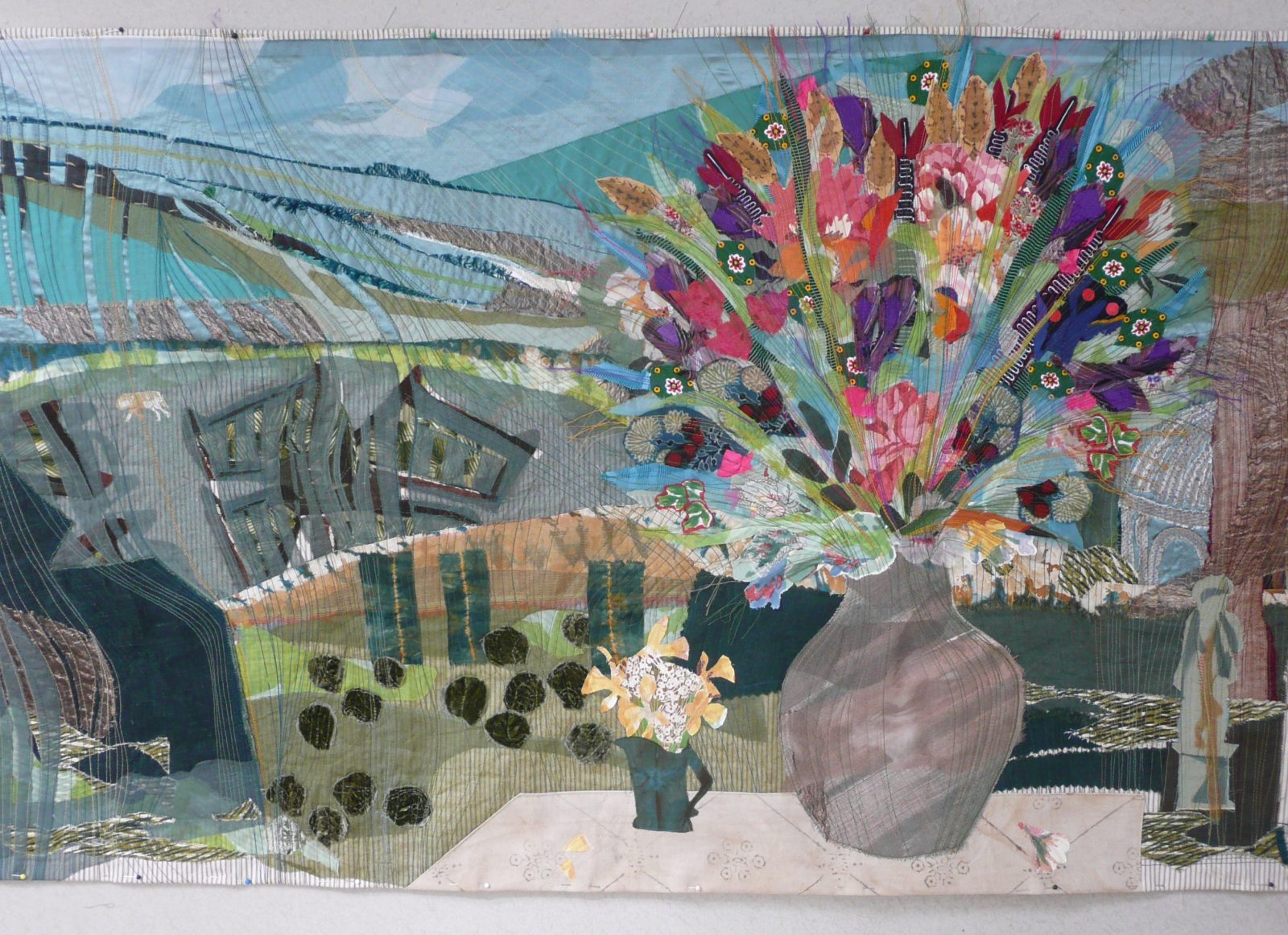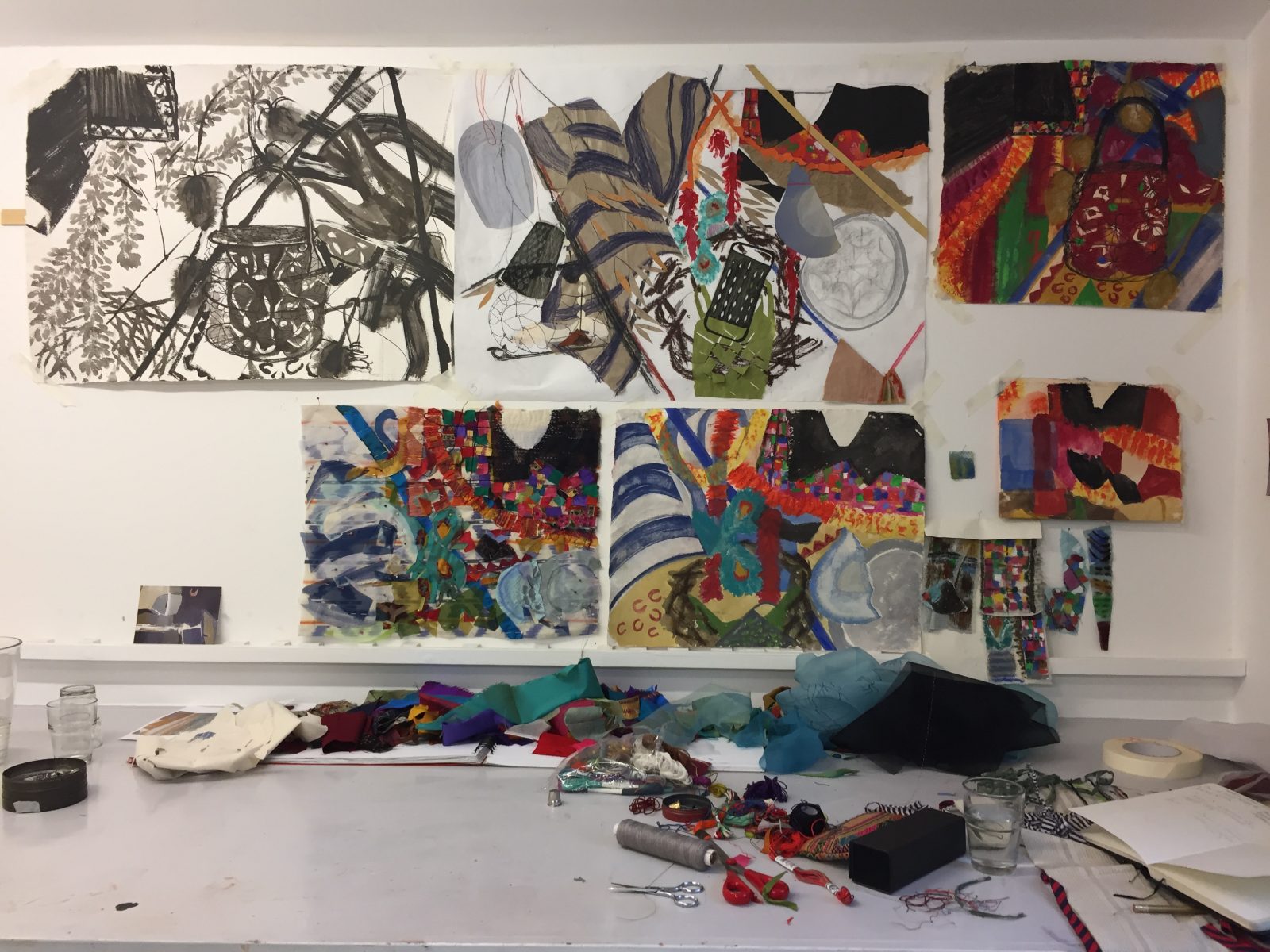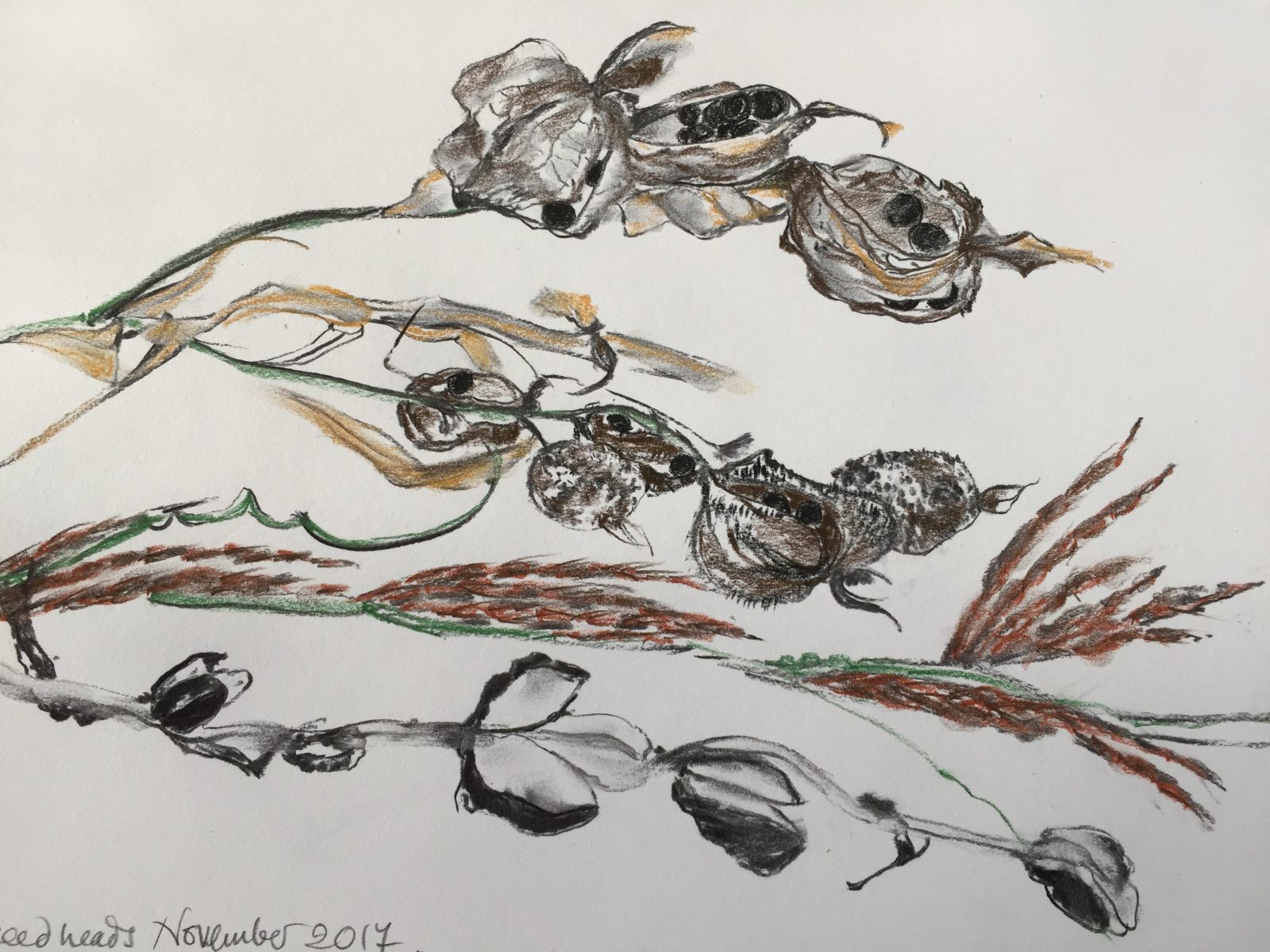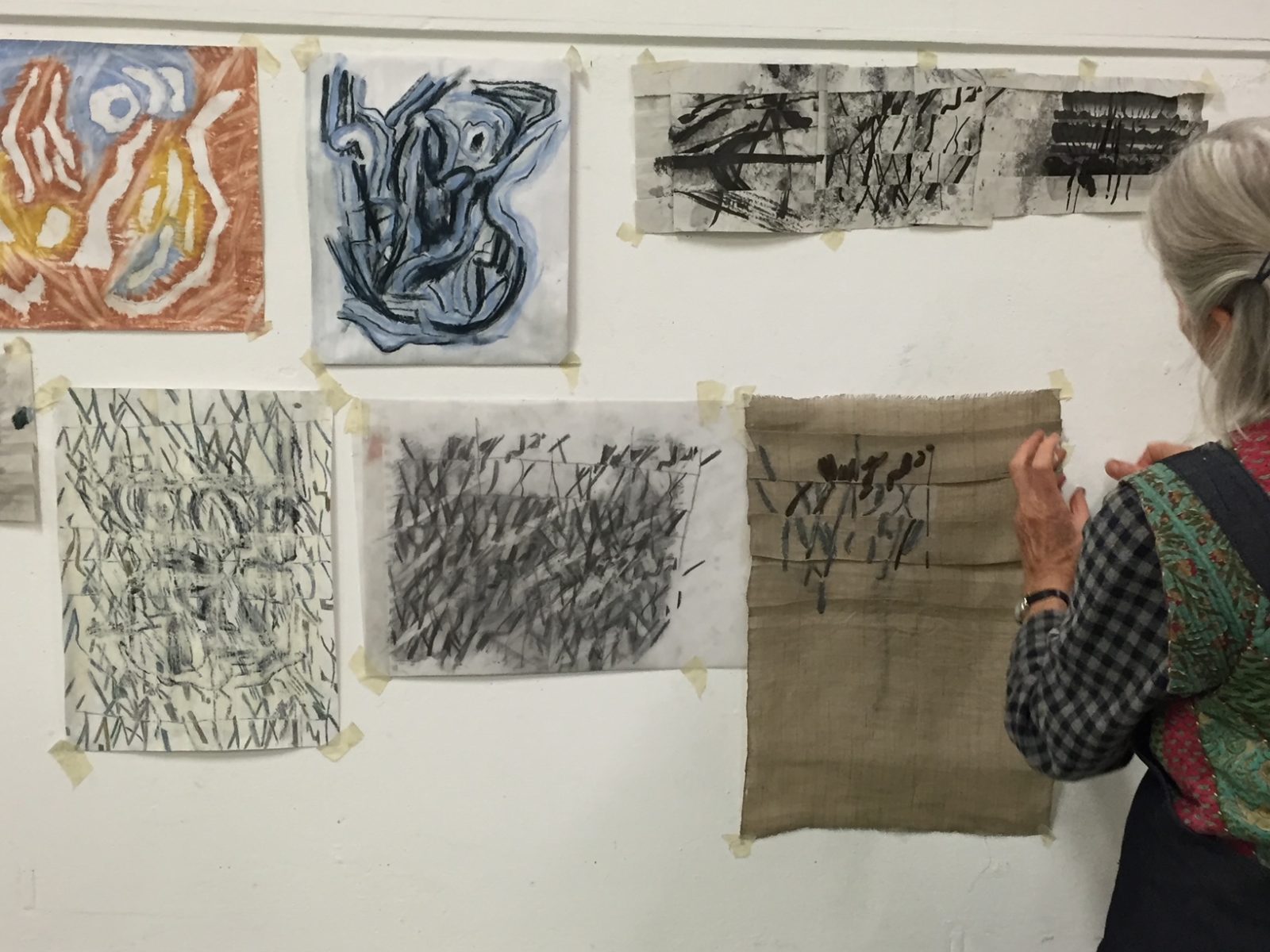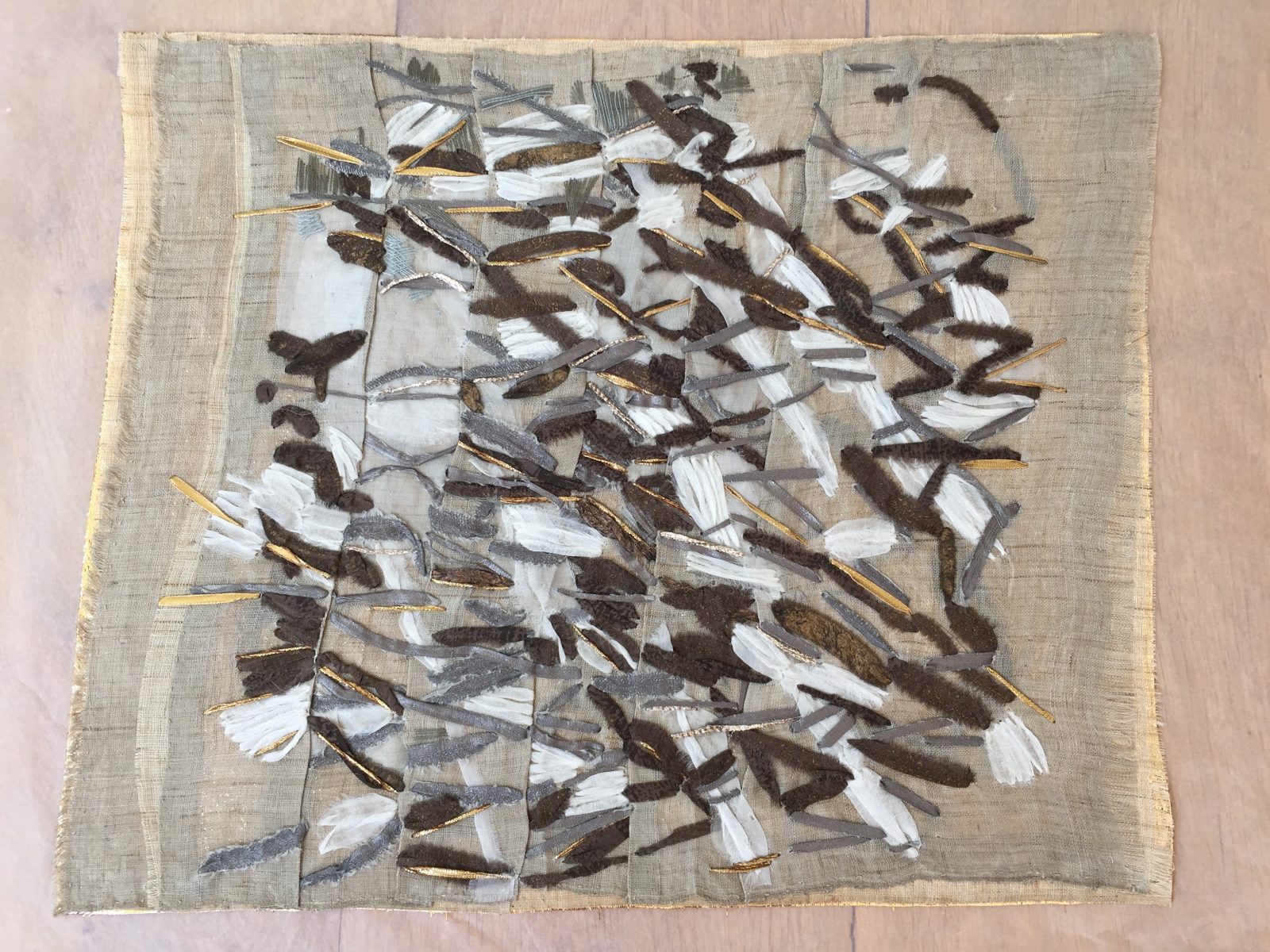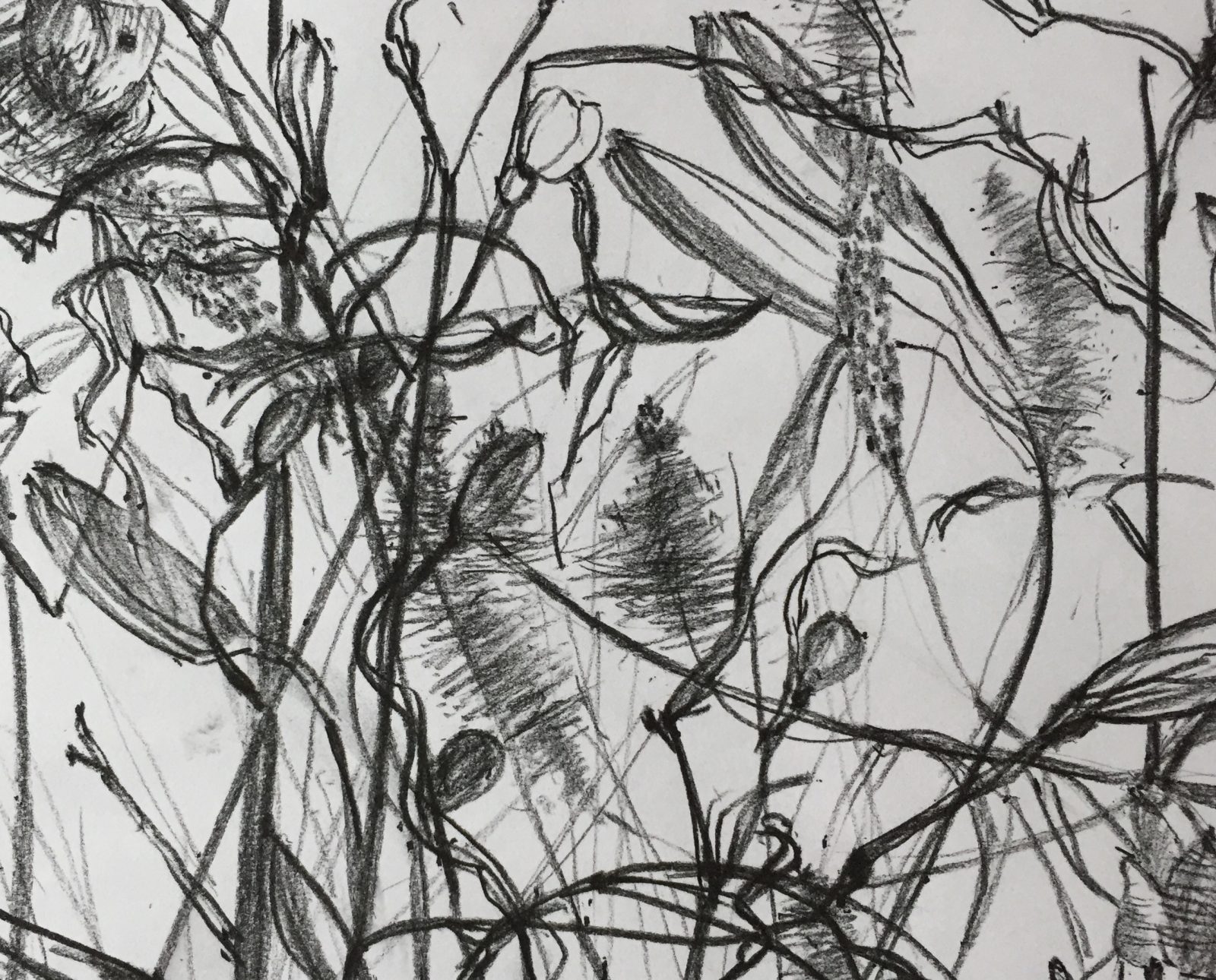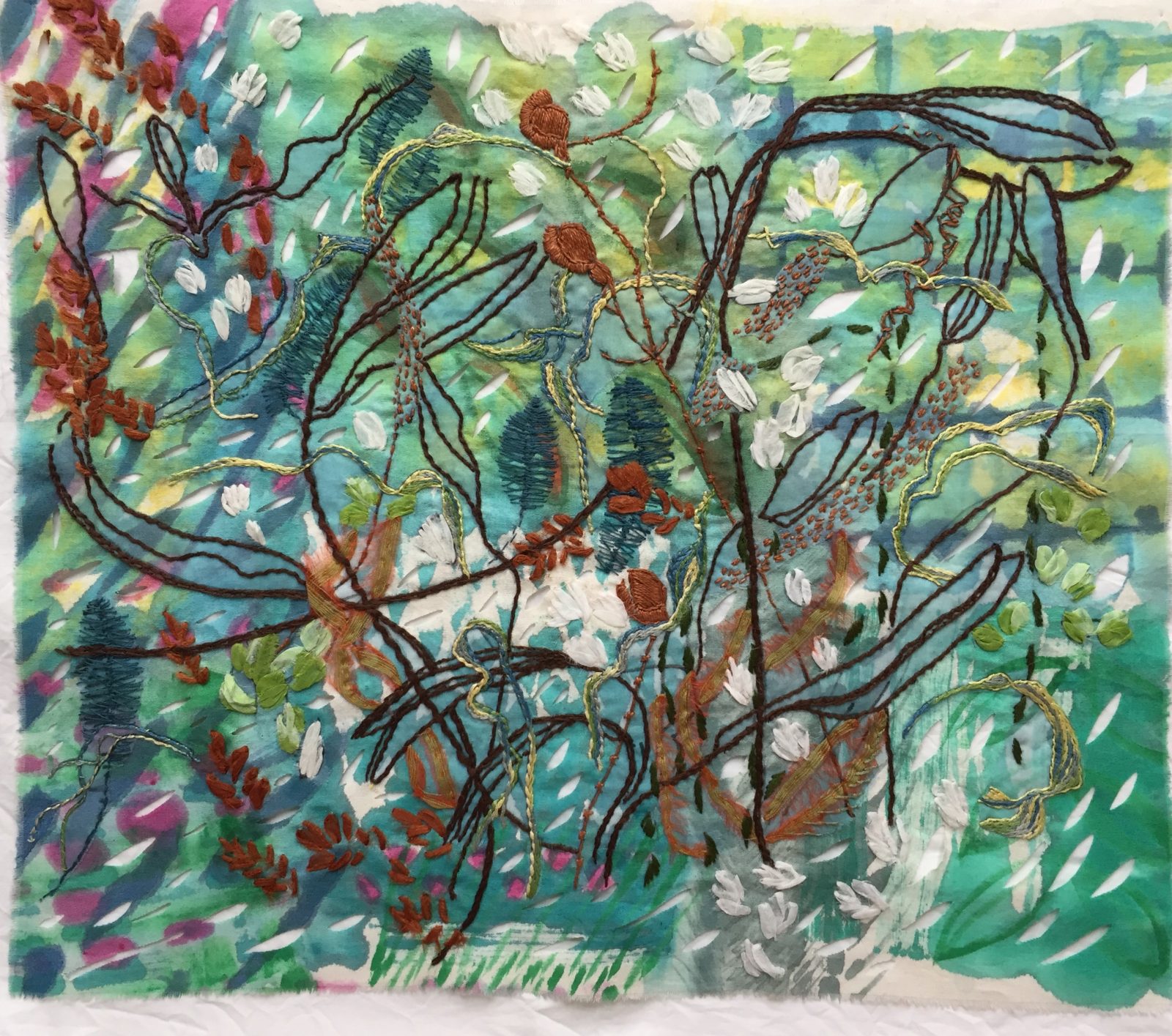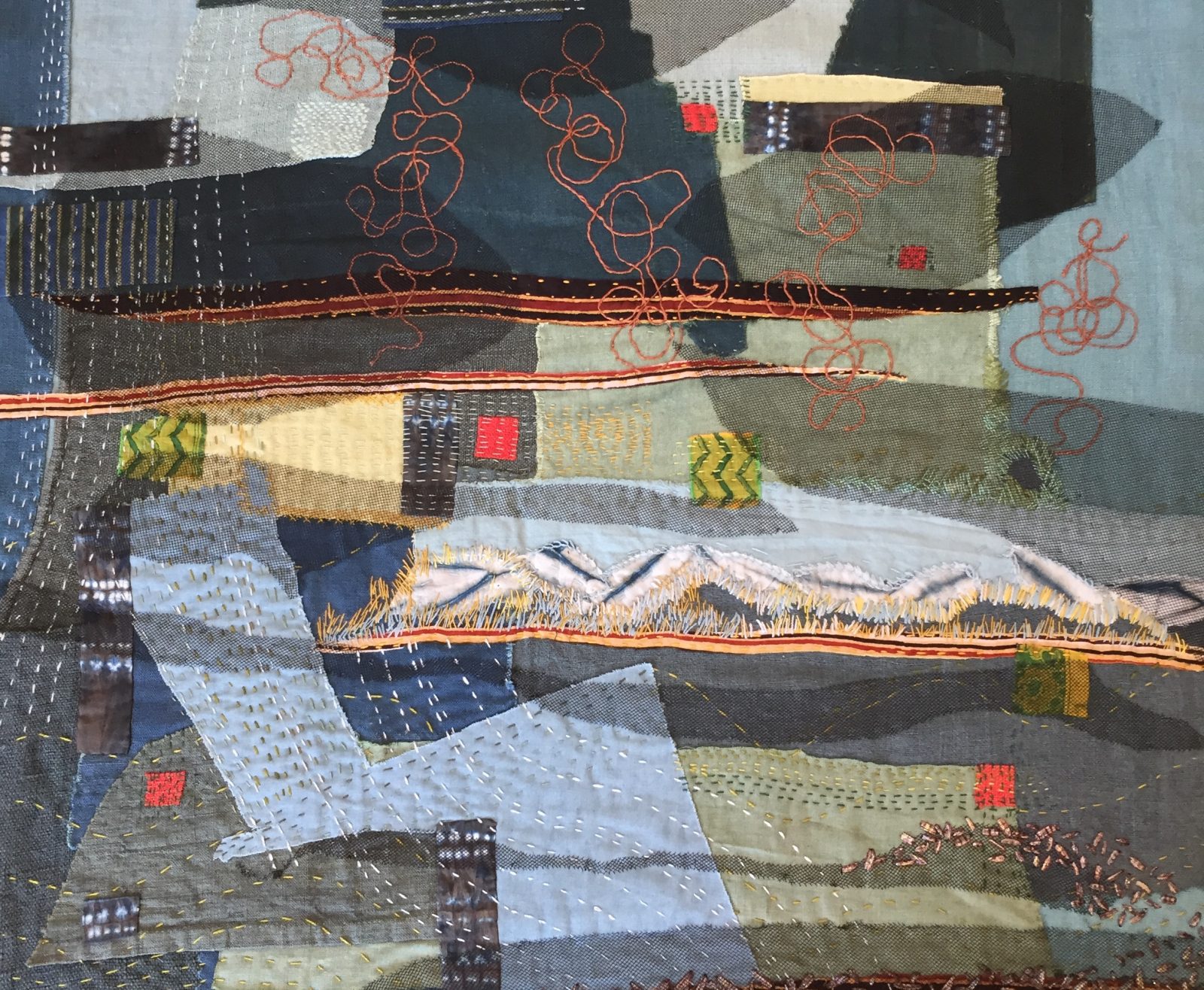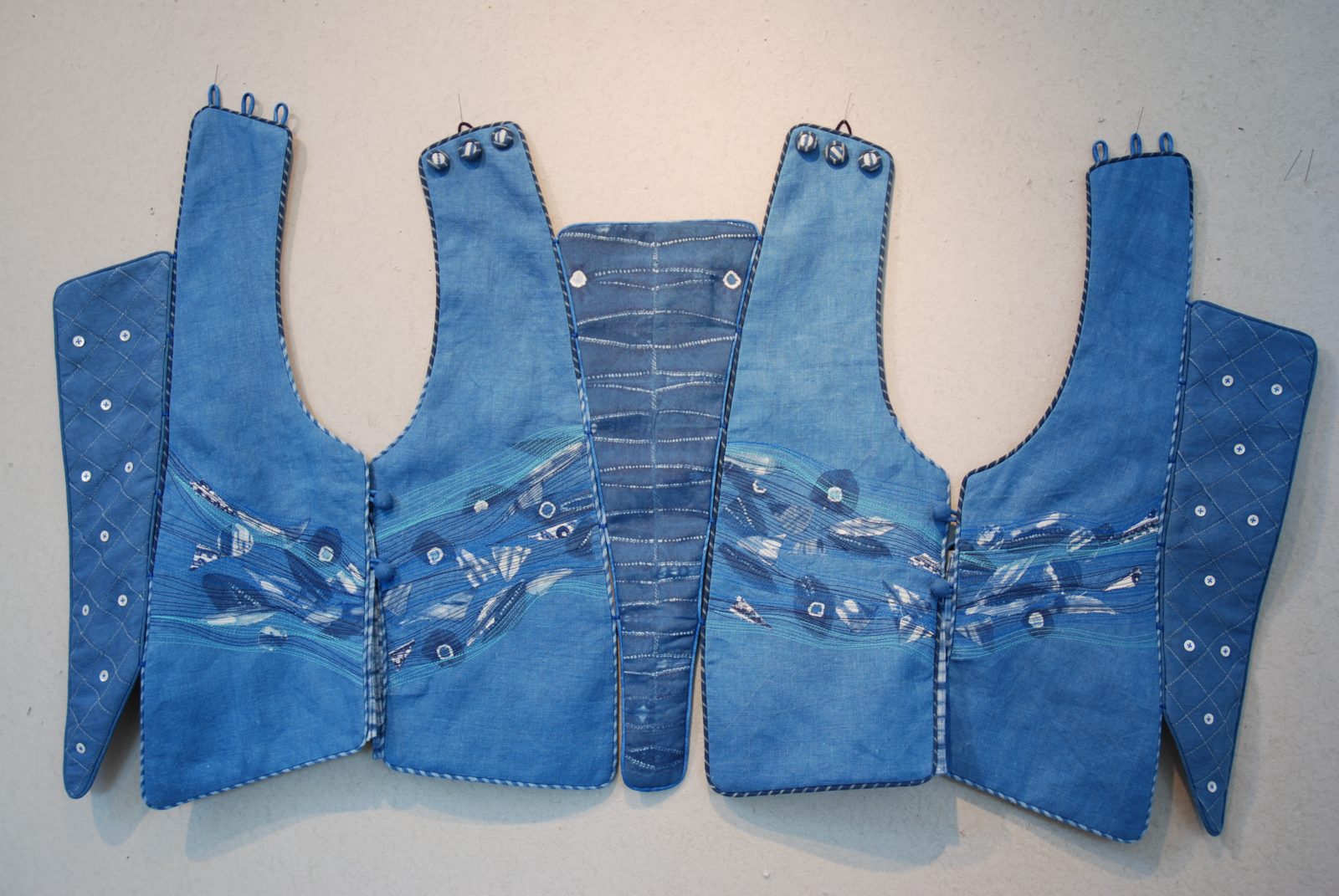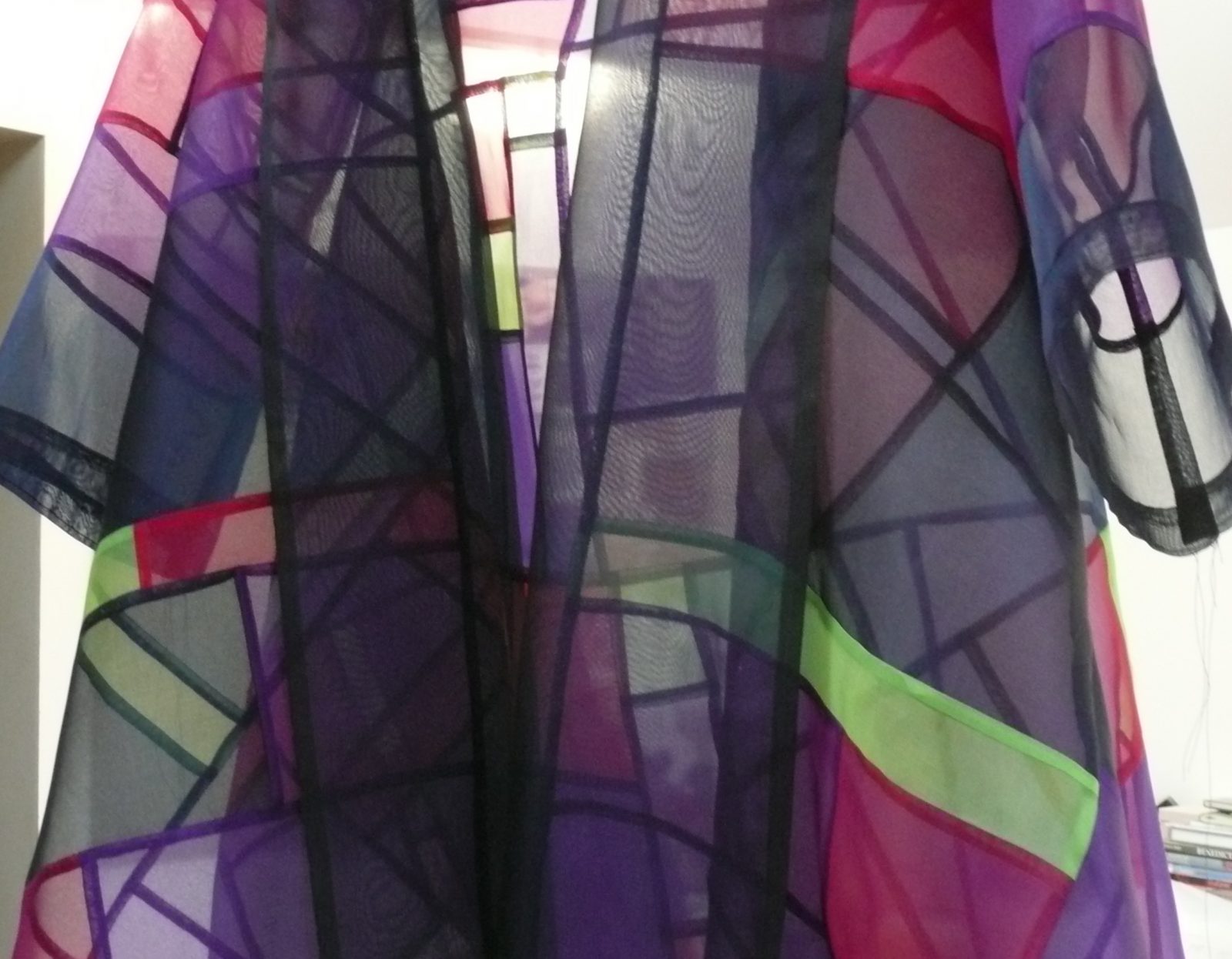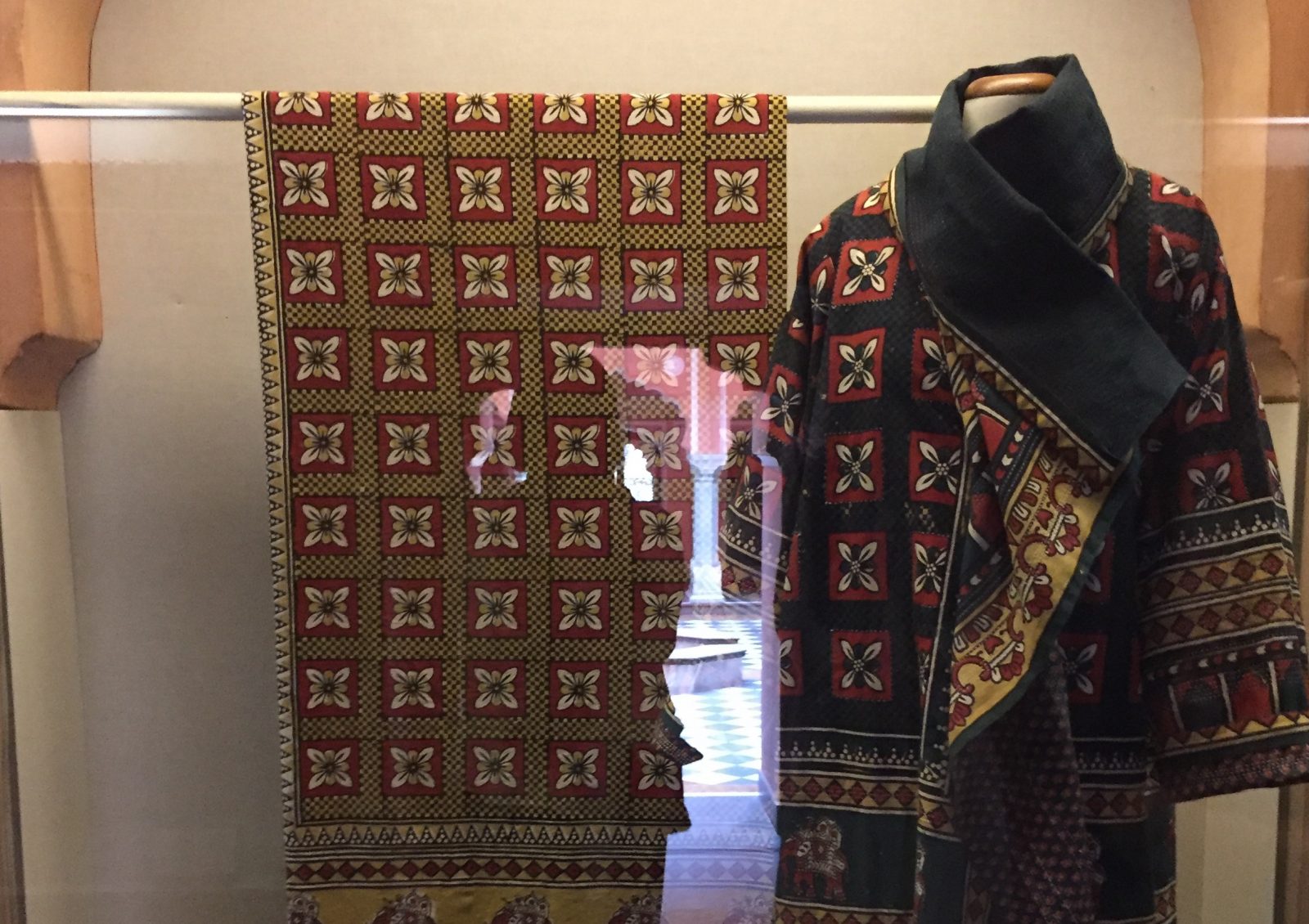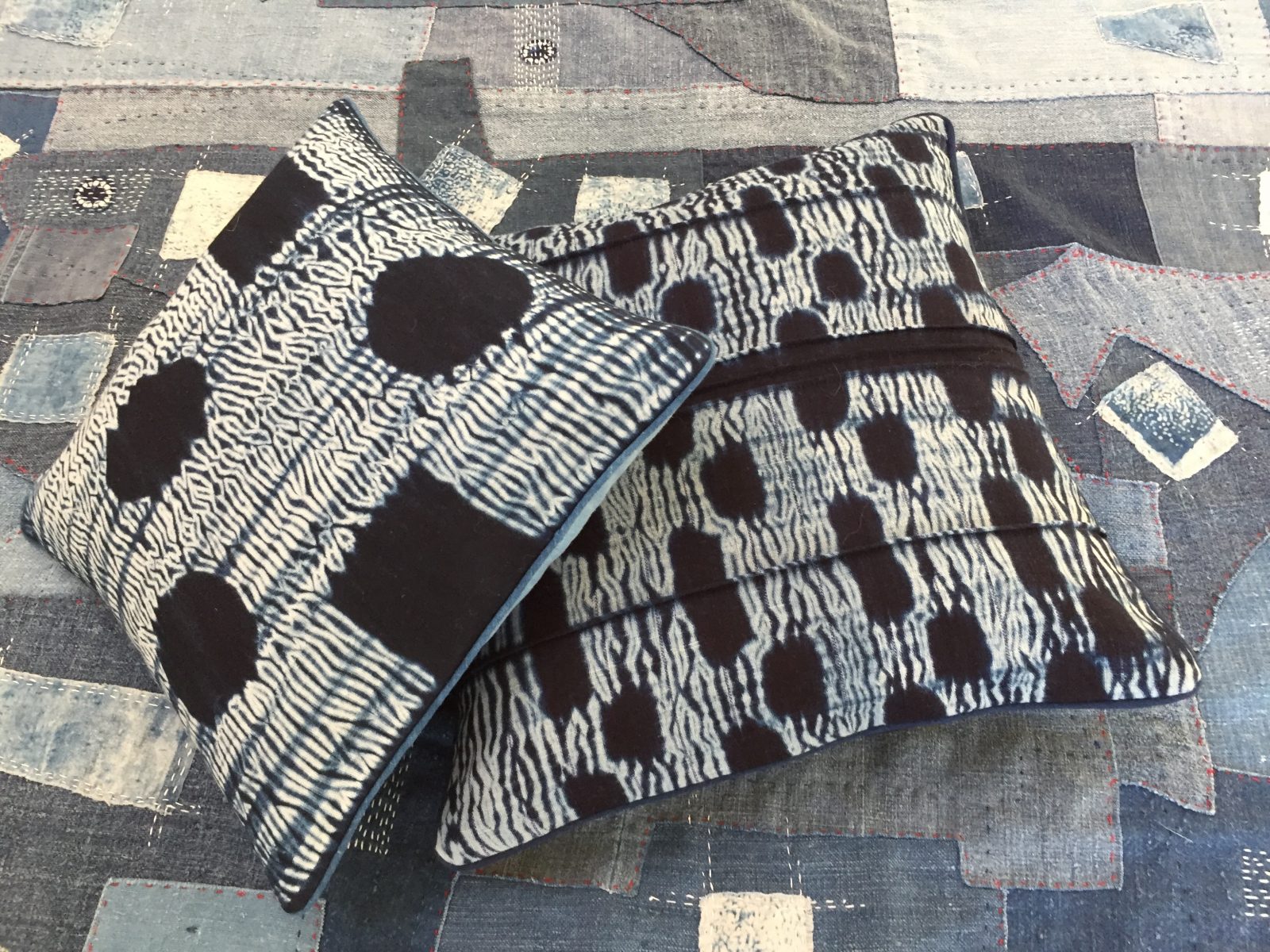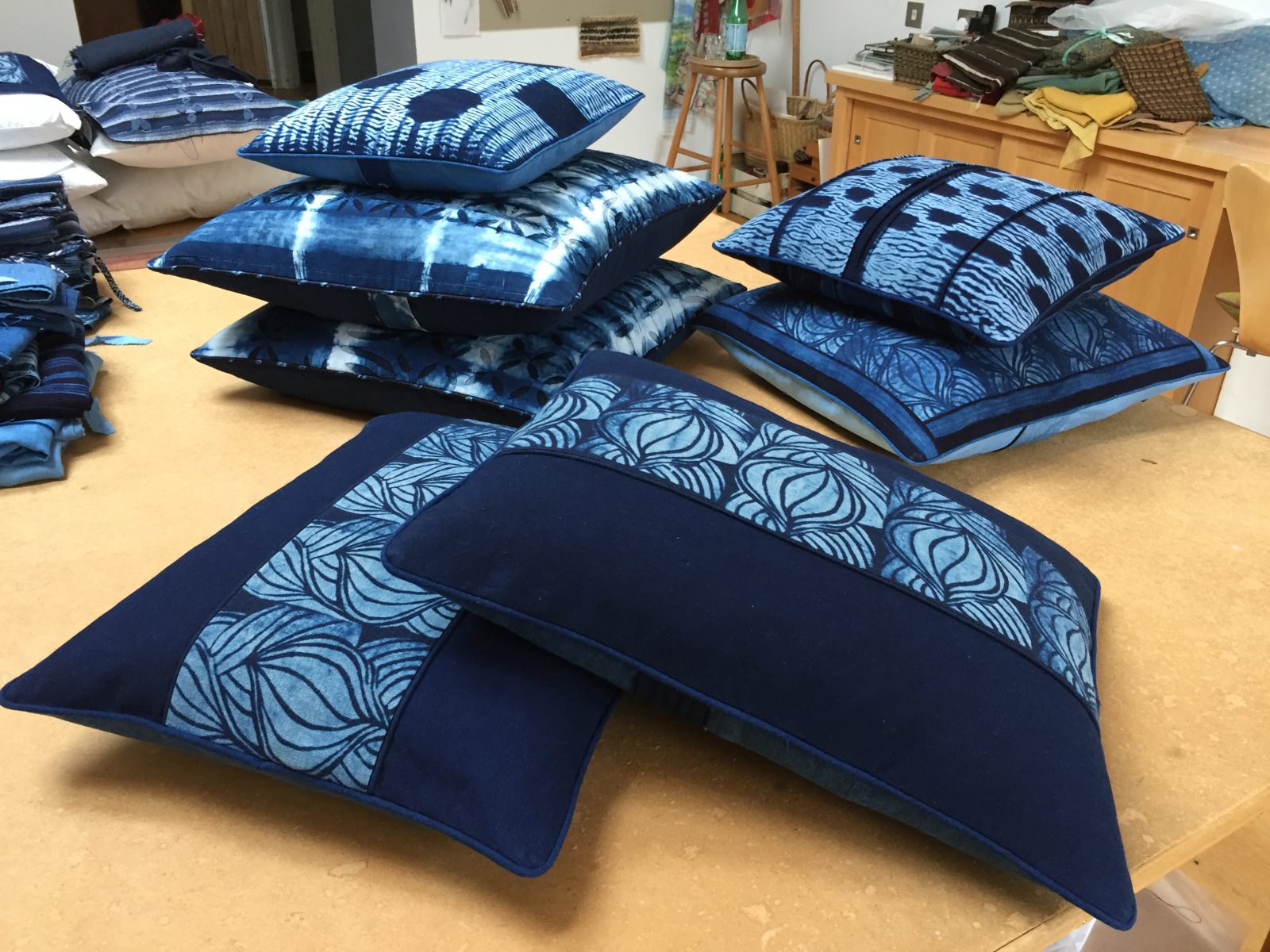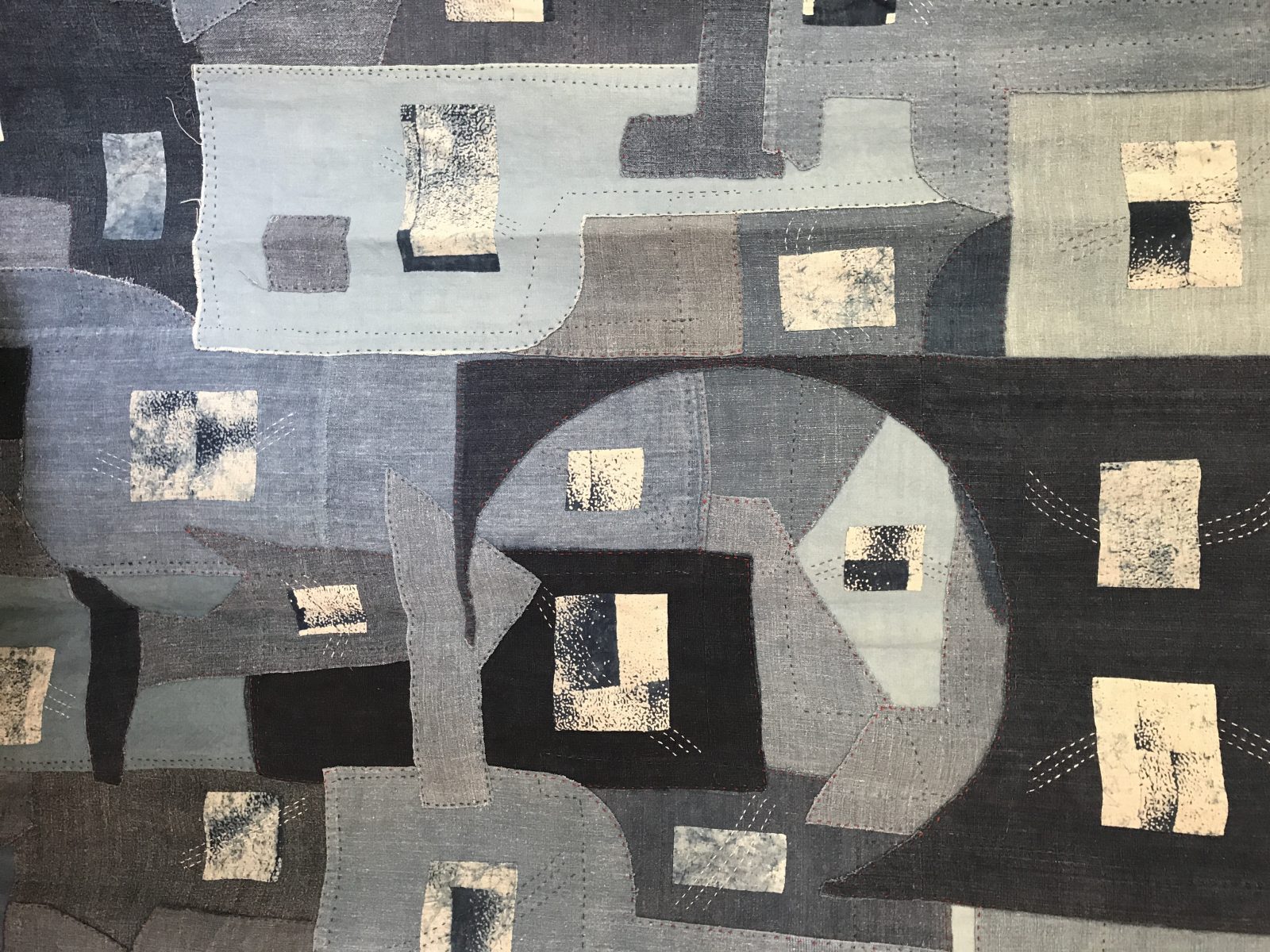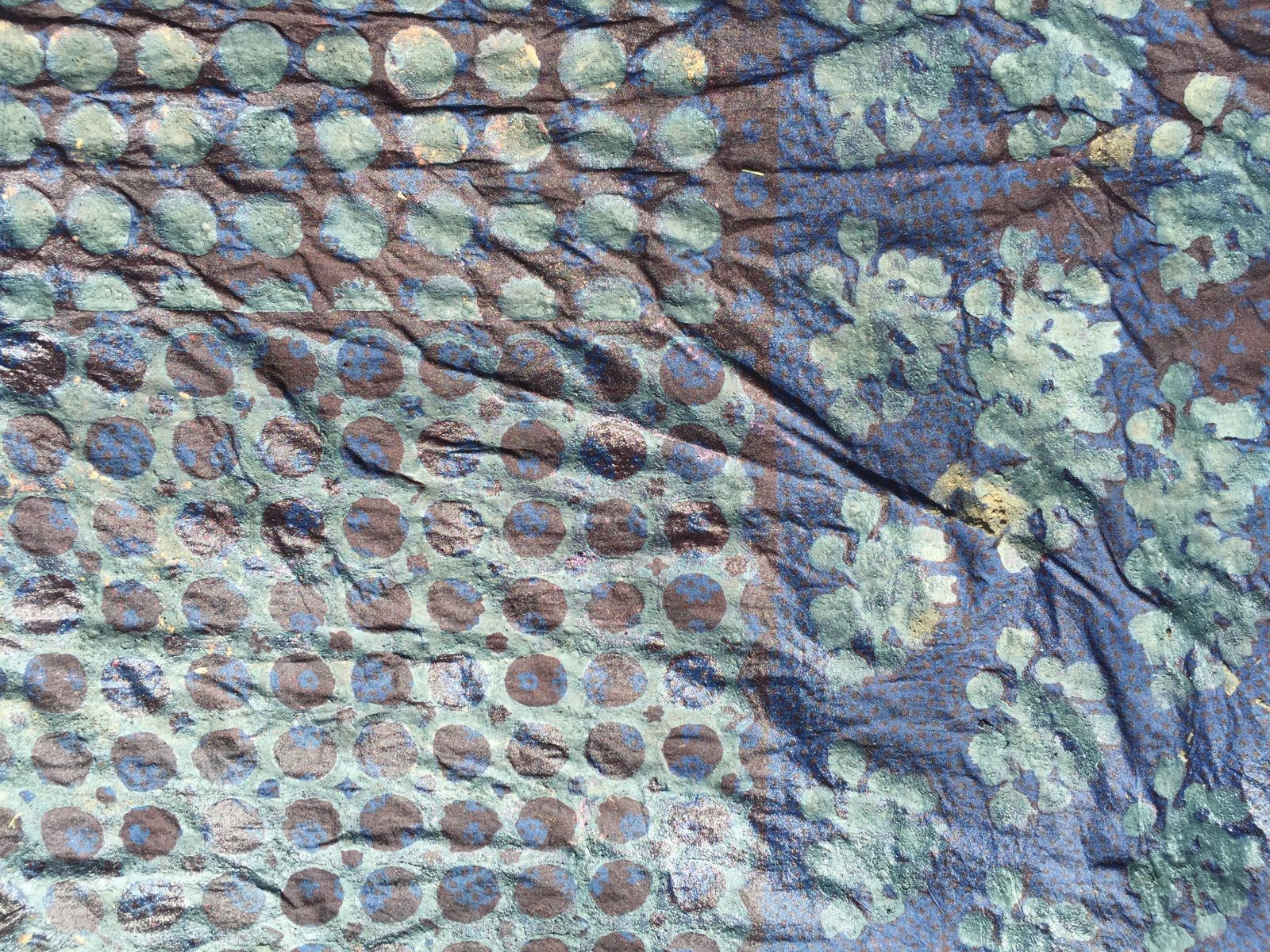Lucy Goffin
“I love fabric in the same way painters love paint: it’s so tactile and rich, in colour, pattern and weave. It’s my medium,” says Lucy Goffin, who trained as a ceramicist but switched to stitch when she took a job sewing ballet costumes, which ignited her passion for the craft. “I’d had an apprenticeship with the studio potter Michael Casson, who lived near my family home in Buckinghamshire, and followed that with a diploma course in ceramics at Harrow Art College. I started to teach pottery but needed to subsidise my income, so in the mid-70s I went to work for the theatrical costumier, Jean Lamprell, and cut my teeth stitching tutus and sylphides, and making period costumes for theatre and opera; all very fine work that I loved doing. And that was the springboard.”
Indeed this springboard to a long and illustrious career that has included commissions as diverse as embellishing Jean Muir’s couture line with cut leather work and embroidery over several years, stitching a Charles I Coat of Arms for The Banqueting House, Whitehall; taking up a year-long artist’s residency at Great Dixter House & Garden in Sussex and lecturing on British textiles in New Zealand, Tokyo and Kyoto. And of course many, many unique garments made for private clients.
Goffin’s finely-tuned appreciation of intricate textile detail is gleaned from her travels, most notably India, where, since 1988, she has enjoyed a long and fruitful collaboration with the Jaipur-based design company Anokhi (the word means ‘unique’ in Hindi).
It was an introduction to Faith Singh, the owner of Anokhi, that set Goffin on this new path. “I met Faith in London, showed her my portfolio, and was flown to Jaipur for a fortnight’s trial”. Inspired by the local textile and stitch techniques, over the years, Goffin has completed many projects for Anokhi, designing clothes, creating fabric patterns with natural indigo dyes using a resist technique, and more recently, making a line of garments for the Anokhi museum in Jaipur from block-printed floor cloths called Jajam.
The benefits worked both ways: early on in the association, Goffin chose to meet and work with the village women who did all the embroidery work, out in the Rajasthan desert. “Back then, they were outworkers, so I lived in a simple hut with a thatched roof, sat cross-legged and learned about their traditional and intuitive stitch techniques, then brought this inspiration back to the Anokhi factory. The women would join seams with unconnected blocks of colour and when I asked them about it, they said they simply and intuitively select the next best colour in their thread bundle – and it always worked!”
“Much inspiration for both Barbara and myself has come from those stitches and inventive ways of using scraps of fabric, combining and embroidering them.” For many years in Jaipur, Goffin headed up a week-long workshop in Jaipur called Stitches of the Desert, teaching the specialised decorative stitches typical of Rajasthan; Kennington booked on one such workshop in 2011, and the two became firm friends as well as collaborators.
Back in Sussex, aside from the many distinctive garments Goffin has crafted over the years, which could just as well be hung on a wall, she is renowned for her collaged pictures, in which contrasting textiles are enriched with appliqué work and machine embroidery. Many of these are of flowers in vases, and here the inspiration is close to home: Goffin is married to the British plantsman Graham Gough, living and working in the plant-packed garden at their nursery, Marchants Hardy Plants. It’s easy to see that the relationship between her work and the garden is symbiotic. “The collage pictures are of imaginary flowers, but they are directly inspired by the structure, texture and colours of the plants that Graham grows here at Marchants.”
Adds Goffin: “I know I chose the right direction, although I have always loved ceramics and hand-made pottery. I was hugely influenced, many years ago in India, by one little piece of fabric – a lightbulb moment when you see the potential of what could be achieved. It was an old piece with a mud resist pattern, and on top of that was a block print and on top of that was the most amazing embroidery, just in parts, so there were these lovely windows peeking through, and I thought, that is what I want to do: achieve that richness of layers.”
